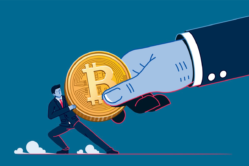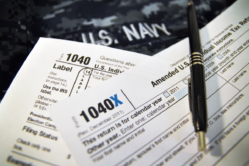Retirement planning hinges upon sound investment strategy, a big part of which is portfolio diversification. Portfolio diversification reduces your investment risk by reducing your dependency on a single asset, according to Fidelity Investments.
Exchange-traded funds – or ETFs – are a simple way for many investors to achieve diversification. This guide will break down the various types of ETFs available to investors, their pros and cons and what you should consider when choosing an ETF.
Table of Contents
What is an ETF?
ETFs contain a mix of investments, making them an easy option for beginners and seasoned investors looking to diversify their portfolios. It’s a more passive approach than picking individual stocks. Professional investors manage the mix of funds in ETFs and control the fund’s diversity and risk level.
ETFs are collections of assets selected for certain criteria, like stocks in a specific industry (e.g. biotech, energy, real estate) or a particular stock index (e.g. S&P 500, Dow).
Investment giant Charles Schwab breaks ETFs down into two basic types: equity and non-equity. Equity ETFs are those that involve stocks in a company, while non-equity ETFs are composed of other asset classes.
Equity ETFs
Equity ETFs are composed of stocks –or equity – of companies. Here are some types of equity ETFs.
Investment Style ETFs
Investment style ETFs are made up of stocks that fit within a market capitalization category and are typically composed of growth stocks, value stocks or a blend of both.
Market Capitalization
Market capitalization, or “market cap“, is the total dollar market value of a company’s outstanding stock shares. To calculate it, you’d multiply the number of outstanding shares of a company by the stock price of one share.
The resulting dollar amount designates the company’s market cap tier.
If the stocks in an ETF have a market cap of between $300 million and $2 billion, it would be a small-cap ETF, according to Fidelity Investments.
Mid-cap ETFs contain stocks of companies with market shares between $2 billion and $10 billion. Large-cap ETFs contain stocks of companies with a market cap of more than $10 billion. You may also see the terms mega-cap, micro-cap and nano-cap used for companies with market share values far above or below these standard tiers.
When you’re comparing funds, investment style ETFs may disclose their mix in their names (e.g. Mega Cap Growth ETF, Mid-Cap Value ETF, Small Cap ETF).
It’s important to note that the value of the companies in an ETF’s portfolio is not the same as the value of the ETF itself.
Growth and Value Stocks
Investment style ETFs will also include “growth,” or “value” stocks – or “blend” of the two.
- Value stocks are those which professional analysts consider underpriced. A “value stock” is essentially one that is worth more than the stock price reflects.
- Growth stocks, on the other hand, are stocks for companies that analysts expect will grow quickly, increasing the share price.
- Blend ETFs combine a mix of growth and value stocks.
Once you understand these concepts, you should have a pretty good understanding of the nine most common investment style ETFs.
| ETF | Market Capitalization | Portfolio Composition |
| Small-Cap Growth | $300 million – $2 billion | Growth |
| Small-Cap Value | $300 million – $2 billion | Value |
| Small-Cap Blend | $300 million – $2 billion | Blend |
| Mid-Cap Growth | $2 billion – $10 billion | Growth |
| Mid-Cap Value | $2 billion – $10 billion | Value |
| Mid-Cap Blend | $2 billion – $10 billion | Blend |
| Large-Cap Growth | More than $10 billion | Growth |
| Large-Cap Value | More than $10 billion | Value |
| Large-Cap Blend | More than $10 billion | Blend |
Jamie Lima, founder and president of Woodson Wealth Management, said that small-cap stocks are inherently riskier than large-cap stocks because they are more prone to large market fluctuations. This is true of small-cap ETFs as well, though small caps may have higher growth potential.
But, investment style ETF providers may have very loose and differing definitions of what value and growth stocks actually are, according to Ben Lies, president and chief investment officer of Delphi Advisers. So a lot of ETFs and mutual funds will have the same – or similar – stocks in their portfolios, regardless of whether they are categorized as value, growth, or blend funds.
His advice was simply to seek out ETFs that cover a broad range of stocks. “The broader the fund, the smoother the ride,” he said.

Sector ETFs
Sector ETFs include stocks from companies in a particular sector, like energy, health care, utilities, or finance.
Sector ETFs achieve diversification by holding stocks from a large number of companies within a particular sector, but it’s not uncommon for entire sectors to see upswings or downswings when news surfaces that the sector will be facing some sort of hardship or windfall. Such changes may be reflected in the prices of every company in a sector ETF.
For example, significant changes in the price of crude oil can affect energy sector ETFs. This is a prime example of market risk, according to Fidelity Investments. The concentration of stocks in one particular industry makes sector ETFs more susceptible to volatility than some other types of ETFs.
Index ETFs
Index ETFs are ETFs that basically track an index, such as the S&P 500 or Dow Jones Industrial Average. The name may reflect the portfolio holder (i.e. iShare or Vanguard) and the name of the index that it tracks.
Both indexes and ETFs contain stocks that meet certain criteria. The S&P 500, for example, is an index containing 500 of the largest companies in the U.S. market. Index ETFs will contain stocks of many – if not all – stocks in their respective indexes.
An Index ETF’s diversity depends on the funds in the index that it tracks. One benefit of an index ETF is that it doesn’t typically involve as much trading activity as other types of ETFs, which can mean lower fees and taxes for investors, according to Charles Schwab.
International ETFs
International ETFs contain stocks from foreign markets, which can be more volatile than U.S. markets. When you invest in an international ETF, you’re typically investing using foreign currency, which carries with it a set of risks, according to investment giant Blackrock.
This means that while potential gains can be significant, so can potential losses. Again, however, diversification in an international ETF can provide some insulation for investors.
Dividend ETFs
Dividends are annual, semi-annual, or quarterly payments from companies or portfolio managers to their shareholders. The amount of a stock a shareholder possesses determines the size of the dividend, which is expressed as a percentage annual yield (APY).
Say, for instance, that an ETF advertises a 2.94% dividend. In that case, an investor would receive 2.94% of the value of their shares in cash dividends or in additional shares.
ETFs that offer dividends are not uncommon, but dividend ETFs focus on accumulating shares of companies that offer higher dividends than other types of ETFs.
It’s worth noting here that investors must pay annual taxes on dividends.
Dividends are not a fixed rate, according to Charles Schwab. Rates change frequently – just because a company pays a dividend now, doesn’t mean it will in the future.
Non-Equity ETFs
Non-equity ETFs are ETFs that are composed of assets other than stocks.
Bond ETFs
Bond ETFs are collections of bonds that governments, financial institutions and companies issue.
Bonds can help offset exposure to more volatile stock offerings, according to the U.S. Securities and Exchange Commission (SEC) But, they can have high minimum buy-ins for investors and there can be severe penalties for withdrawing funds before a bond matures, which can take several years.
Bond ETFs allow investors to enjoy the safety of a bond without having to buy directly into a bond, according to Charles Schwab. Bond ETFs also have lower fees because there isn’t a great deal of trading activity.
Like bonds, however, bond ETFs may yield lower returns compared to riskier alternatives.
Commodity ETFs
Commodity ETFs trade in commodities. A commodity’s value determines the value of the ETF that holds it. Gold, for example, is a commonly traded commodity.
Institutional investors like Goldman Sachs or Invesco will either possess the physical commodity or futures contracts for it. Futures contracts are contracts to sell a certain amount of a commodity at a set price on a specified date, according to Charles Schwab.
They are highly volatile investments due to their speculative nature: investors must bet on whether the commodity will increase or decrease in value at the time of the sale.
Note: Exchange Traded Notes (ETNs) are common in commodities markets, but ETNs are not the same thing as ETFs and carry higher risks.
Commodity ETFs are also less diverse than other ETF types.
According to Blackrock, commodity ETFs can pose a fairly significant counterparty risk – the issuer may not have the ability to repay their debt if things go sour.
Currency ETFs
Currency ETFs track the value of a currency. They may track a single currency, or they may track multiple different currencies. The more currencies they track, the less volatile they are. Though global politics and economic events may impact any ETF, currency ETFs are particularly susceptible to swings for political reasons, according to Charles Schwab.
Pros and Cons of ETFs
Pros
- Diversification – This is the key to being a successful investor. ETFs allow you to have a stake in hundreds or even thousands of companies in one fund. So many companies are unlikely to disappear overnight.
- Managed – Professional investors manage most ETFs. These professionals have an obligation to look out for the best interest of their investors. Investing in ETFs allows you to take a backseat to your investment strategy – you don’t have to know a great deal about all of the metrics that professional investors use in choosing stocks. ETFs allow you to reap the benefits of their knowledge.
- Traded on the market – Unlike mutual funds, ETFs are traded on the market. You can enter and exit positions anytime that the markets are open.
Cons
- Fees – Many ETFs charge management fees. You should always investigate an ETF to see if there are any fees you need to pay, such as management fees or distribution fees. These may be one-time fees charged to enter an ETF, annual fees or trading fees. The SEC Guide to Mutual Funds breaks down common fees investors should be aware of.
- Tax Implications – If your ETF pays dividends, you may owe taxes on it. Additionally, when your ETF manager makes a trade, you may be responsible for paying capital gains taxes. The Guide to Mutual Funds discusses tax implications that apply to ETF investments at length. Often, you can avoid these tax implications if you hold your assets in tax advantaged accounts like a 401k or IRA, according to the SEC.

How to Choose an ETF
Before you decide on any investment, consider your risk appetite. Growth that will make you wealthy overnight is a rarity. Like most things in life, high rewards typically only come with high risks.
Choose your investments based upon the level of risk that you’re willing to accept and understand that even small gains over a long period of time can amount to large sums of money by the time you reach retirement age.
At the end of the day, Lima said, investors should select the ETF that’s right for them based on their individual circumstances. He said that even young investors he works with often prefer a more conservative investment strategy than their peers.
Lies recommended that investors establish rules for when to enter or exit an investment and stick to them. He said frequent trading is not often in the best interest of most small investors, and investors should not try to predict the market.
If your goal is retirement, Lies said it’s best to simply ride the waves. In the long run, there’s a very good chance you’ll come out on top.
You can view historical trends on investment websites like Morningstar or TD Ameritrade. Use this information to help you make informed decisions about your investments.




About the comments on this site:
These responses are not provided or commissioned by the bank advertiser. Responses have not been reviewed, approved or otherwise endorsed by the bank advertiser. It is not the bank advertiser’s responsibility to ensure all posts and/or questions are answered.